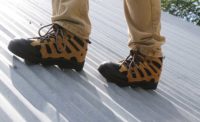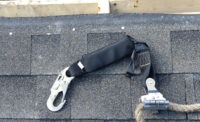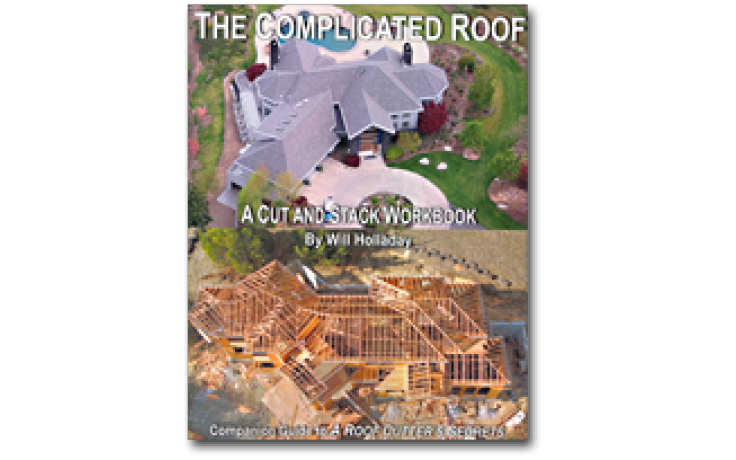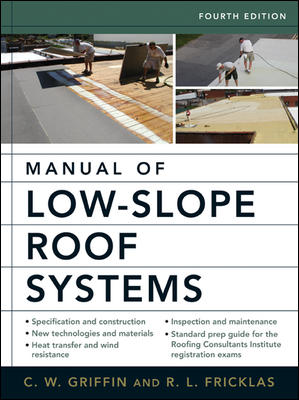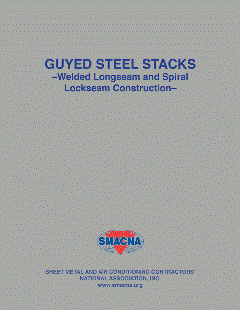The Danger of Pine Pollen on Metal Roofs
Pollen Season: Metal Roofers Beware!

Pollen can create “black ice”-like situations for roofers.
In mid to late spring, here in upstate New York we have an approximately three-week-long pine pollen season when the predominant local conifers release an annual epic flood of pale yellow, microscopic pollen grains into the air.
Depending on time of day and environmental conditions, the male pollen particles have evolved methods to protect their gamete cells while traveling great distances in a brief time, maximizing deposition over vast areas.
Although pine pollen is a solid material, when deposited in large quantities they can assume some fluid properties. Once accumlated on a surface in a slight breeze, the pollen cells (grains) can roll over and around surfaces in tumbling “wavelike” patterns, much like powdery wave patterns observed on windward sand dunes. Atmospheric condensation may form on these pollen-covered surfaces on cool metal surfaces (e.g. roofs and autos), producing “pollen pudding” which, upon exposure to solar radiation, evaporates the condensate water, forming thin “pollen cakes.”
Also like water, pollen that has settled on a surface defies compression underneath a boot sole, ejecting laterally between compressing surfaces, eventually becoming airborne again. When caught between compressed surfaces, each and every grain performs like a miniature, kinetic roller-bearing between those surfaces.
In so doing, they virtually eliminate friction, allowing the kinetic surface (boot sole) to roll easily on the sheet metal roof.
Between a Rock and a Hard Place
While no studies on the compressive strength of a pollen cell seem readily available, a look at their structure indicates that the exterior cell wall is designed to resist incredibly high crushing forces from the outside.
I have knelt on a pollen-coated truck bed until the open weave of my denim jeans becomes total impacted with pollen grains, at which point both compressed surfaces become solid, opposed objects capable of sliding frictionless against one another. It resembled kneeling on ice.
Obviously, pine pollen may be easily deposited or disturbed by air currents onto metal roof decks. Here in rural upstate New York, the typical application for durable steel roofing and siding is in agricultural and light commercial buildings. Many of these fabricated steel structures have roof pitches generally between 4:12 to 6:12. Many older barns and equipment sheds with pitches between 10:12 to 12:12 are typically reroofed by applying corrugated metal roofing directly over the existing shingles or shakes on perpendicular strapping. During pine pollen season in the spring, I have observed dense yellow pollen lines accumulating on the ground underneath the “dripline” at the eaves of these metal roofs.
Pollen Season
In some years, I have observed three clearly distinct stages to the pollen season here in the northeast: Initial; middle; and terminal. In the Initial week, it may prove difficult to see any clear deposition of pollen grains, but physical symptoms may tell you they’re there. If you leave a glove on the hood of your vehicle in the morning and pick it up in the afternoon, you might detect the slight outline of five fingers.
During the middle stage, when environmental conditions are right after an initial week of pollination, the male cones (microstrobilus) fully open to discharging the majority of their pollen grains into the air. In this second week or so, during calm conditions, you can clearly write your name with a finger in the dense yellow deposition of pollen grains on the hood of your vehicle. Allergic reactions peak during this time, casing mild to severe eye, nose and throat symptoms, with chronic headaches.
During the third and terminal week of pollination, the free pollen particles that were initially produced became airborne in the first two weeks get batted around the plantation on the breeze for any chance, last-minute fertilization. Springtime rain and wind will drive these remaining grains of pollen away. With that, the relatively short pine pollen season ends.
Static Load Testing
During the last several years I have performed 200-pound static load testing using progressive models of magnetic roofing boots (manufactured by Cougar Paws Inc.) on various steel roof test samples at varying pitches under wet and dry conditions as well as with both a thin (outline) to moderate (signature) coating of Chinese pine pollen. The results are both dramatic and uniform.
My static load testing protocols during these trials were designed in order to provide both dependable and reproducible results, including: 1) the five types of steel roofing material (Painted Galvalume, Clear Galvalume, Galv. Standing Seam, Galv. Imperial Rib and Galv. Corrugated); 2) various roof pitches (4:12, 6:12, 8:12, 10:12 and 12:12); 3) varying environmental test conditions (surface temperature; wet; dry; or “pollinized”); 4) the Gauss field strengths of different magnets; and 5) and the material compositions and tread patterns of outsoles.
The most remarkable pass/fail test results were documented when testing under “moderate” pollen conditions. The large number of boot samples that had successfully “passed” static load tests under wet and dry conditions, all consistently and dramatically failed above 4:12 pitch under pollen conditions. The precise type of test failure changed as the roof pitch increased. The only results that didn’t change significantly with boot modifications were under moderate pollen conditions.
It just didn’t seem to matter what boot modifications were made, a 200-pound roofer could neither stand nor walk on a steel roof covered with pine pollen. If either the total number or the Gauss field strength of the magnets were increased to hold a 200-pound roofer on a pollen roof at 12:12 pitch, it would likely be impossible to raise the boot off the deck to either walk or work.
In all probability, any amount of pine pollen deposition on a metal roof deck should impose the “black ice” factor. Even with 100 percent PFAS implemented, roofers could suffer the consequences of fall-in-place accidents, rake and eave-suspended falls and their associated rescue complications and schedule delays. It is, therefore, advisable under penalty of injury (or possibly death) from arrested falls, to suspend all metal roofing work during your local pine pollen season in rural and suburban environments where conifers are present in reasonable populations.
The most dangerous two-week period for metal roofing contractors is during the first week of pine pollen season as well as the preceding week, when pollen may still be produced but deposited on the roof in hazardous quantities simply too small to be detected by the eye alone. Keeping track of the generic pollen counts posted daily in the local news media and online researchers may give you a clue, but only in-situ air grab-sampling and time-weighted monitoring of the pollen count in your particular neighborhood using a laser particle counter, a particulate dosimeter or dust monitor could quantitatively detect the actual onset of pine pollen season.
In lieu of purchasing all that expensive equipment, starting April 1 I lay a leather work glove on a fresh sheet of black poster-board every day (when rain isn’t forecast). I use a hand-held, field microscope (up to 100X magnification and < $100)) to look at the defined edge of the glove outline to check for pine pollen. This is a relatively low-cost, yet dependable, method used to detect the onset of pollen season in my small pine plantation.
Conclusion
While I have personally attempted to maintain uniform and scientific testing procedures during my investigation, I am not claiming my results are anything but exemplary and amateur at best. The results of 200 pound dead load static tests performed repeatedly and uniformly on various steep pitch (> 4:12) metal roof samples strongly suggests that nothing will definitively prevent loss of boot traction during pine pollen season on the sloped roof, any more that I could successfully stand, let alone walk, across a floor covered with marbles, notwithstanding the use of a magnetic force.
Experienced metal roofers working in urban and suburban sites are undoubtedly familiar with the phenomena of gross pine pollen accumulation and may perform more cautious roofing practices during pine pollen season. About the most successful engineering method of fall hazard control for heavy pollen coatings is using a pressure washer with biodegradable soap on the roof from ridge to eaves. However during heavy pollination it would be difficult to totally remove pollen from the roof without repeated washing, which can present its own hazards and delays on a steep metal roof. The extreme difficulty of producing professional roofing results during uncontrollable “black ice” conditions might suggest delaying the roofing schedule for a couple of weeks in order to avoid more disastrous and expensive setbacks.
Looking for a reprint of this article?
From high-res PDFs to custom plaques, order your copy today!




